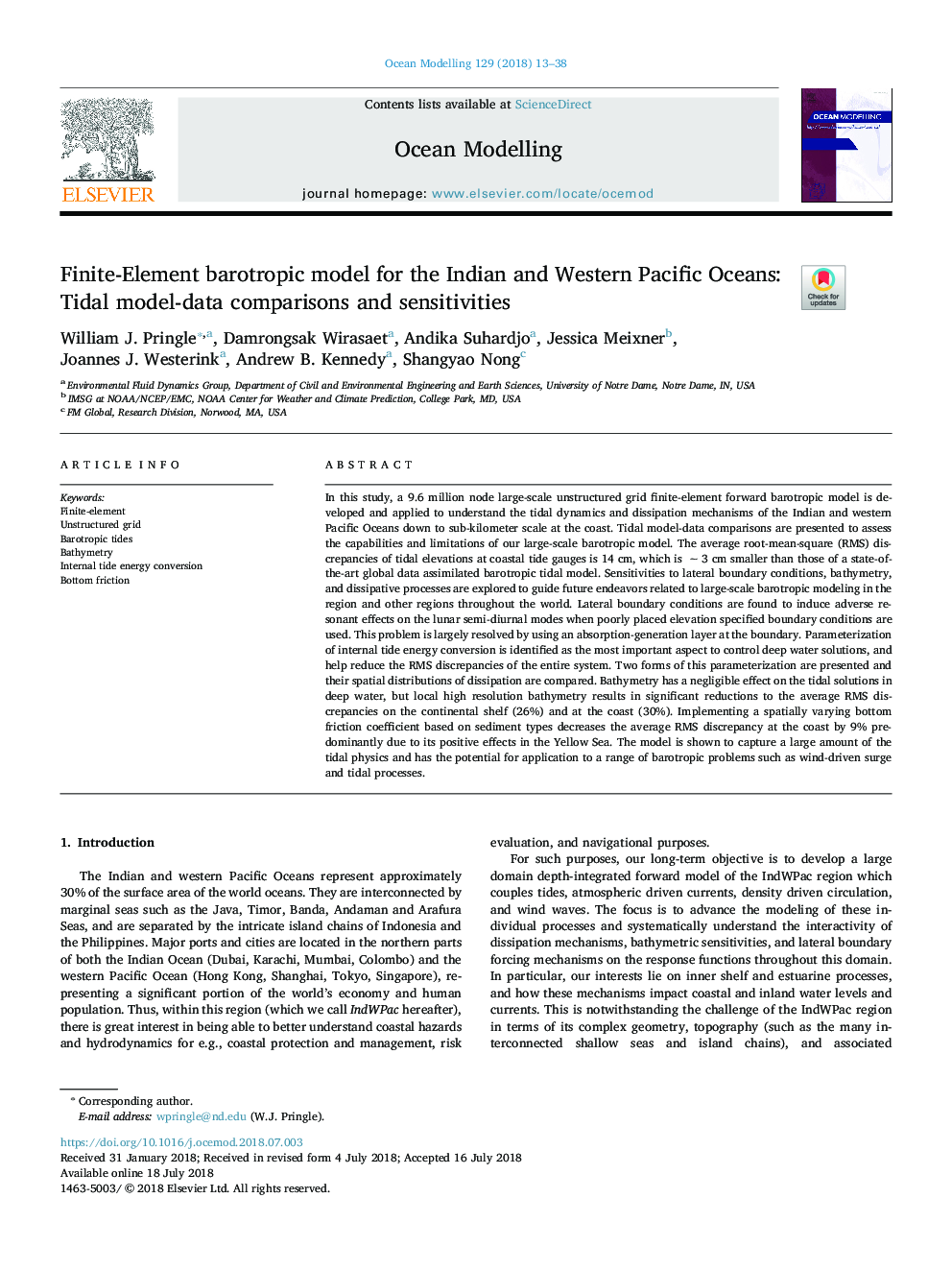| کد مقاله | کد نشریه | سال انتشار | مقاله انگلیسی | نسخه تمام متن |
|---|---|---|---|---|
| 8886477 | 1627720 | 2018 | 26 صفحه PDF | دانلود رایگان |
عنوان انگلیسی مقاله ISI
Finite-Element barotropic model for the Indian and Western Pacific Oceans: Tidal model-data comparisons and sensitivities
ترجمه فارسی عنوان
مدل باروتروپ محدود عنصر برای اقیانوس های هند و غرب اقیانوس: مقایسه و حساس بودن مدل داده
دانلود مقاله + سفارش ترجمه
دانلود مقاله ISI انگلیسی
رایگان برای ایرانیان
کلمات کلیدی
المان محدود، شبکه غیر ساختاری جزر و مد باروتروپیک، بیتومتری، تبدیل انرژی جزر و مدی داخلی، اصطکاک پایین،
موضوعات مرتبط
مهندسی و علوم پایه
علوم زمین و سیارات
علم هواشناسی
چکیده انگلیسی
In this study, a 9.6 million node large-scale unstructured grid finite-element forward barotropic model is developed and applied to understand the tidal dynamics and dissipation mechanisms of the Indian and western Pacific Oceans down to sub-kilometer scale at the coast. Tidal model-data comparisons are presented to assess the capabilities and limitations of our large-scale barotropic model. The average root-mean-square (RMS) discrepancies of tidal elevations at coastal tide gauges is 14 cm, which is â¯â¼â¯3 cm smaller than those of a state-of-the-art global data assimilated barotropic tidal model. Sensitivities to lateral boundary conditions, bathymetry, and dissipative processes are explored to guide future endeavors related to large-scale barotropic modeling in the region and other regions throughout the world. Lateral boundary conditions are found to induce adverse resonant effects on the lunar semi-diurnal modes when poorly placed elevation specified boundary conditions are used. This problem is largely resolved by using an absorption-generation layer at the boundary. Parameterization of internal tide energy conversion is identified as the most important aspect to control deep water solutions, and help reduce the RMS discrepancies of the entire system. Two forms of this parameterization are presented and their spatial distributions of dissipation are compared. Bathymetry has a negligible effect on the tidal solutions in deep water, but local high resolution bathymetry results in significant reductions to the average RMS discrepancies on the continental shelf (26%) and at the coast (30%). Implementing a spatially varying bottom friction coefficient based on sediment types decreases the average RMS discrepancy at the coast by 9% predominantly due to its positive effects in the Yellow Sea. The model is shown to capture a large amount of the tidal physics and has the potential for application to a range of barotropic problems such as wind-driven surge and tidal processes.
ناشر
Database: Elsevier - ScienceDirect (ساینس دایرکت)
Journal: Ocean Modelling - Volume 129, September 2018, Pages 13-38
Journal: Ocean Modelling - Volume 129, September 2018, Pages 13-38
نویسندگان
William J. Pringle, Damrongsak Wirasaet, Andika Suhardjo, Jessica Meixner, Joannes J. Westerink, Andrew B. Kennedy, Shangyao Nong,
